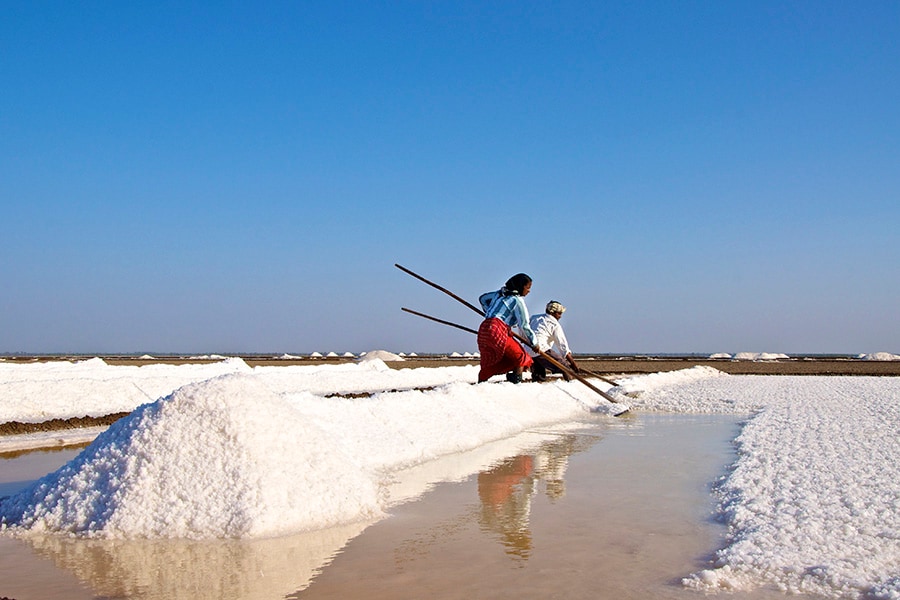
Gujarat salt industry hit by US-China trade war
China is the largest importer of Indian salt, 80 percent of which comes from Gujarat. As demand for its finished products is falling, so is that of the raw material used, causing the state's salt manufacturers and farmers losses of more than Rs 100 crore
 Image: Malcolm Chapman / Getty Images
Image: Malcolm Chapman / Getty ImagesGandhidham (Gujarat): Forty-five-year-old Narubhai Koli, a traditional Agariya (salt farmer) in Gujarat, is confused at the current state of the salt industry.
Koli, a resident of Santalpur village in Patan district, was told by the salt trader, to whom he sells his produce, that there is a slowdown in the market and thus, he won't be able to buy more salt, without further explanation.
Truth is that the trade war between the United States and China has hit the salt industry in Gujarat, the primary salt producing state of India and also the home state of Prime Minister Narendra Modi. China is the largest importer of salt from India; China’s chemical factories, which consume the most salt, have cut down on purchases as demand for their finished products decelerated because of increased US tariffs.
Like Koli, numerous salt farmers have felt the hit of this slowdown, but aren’t aware of how the trade war between two other countries is impacting their livelihoods, says Harinesh Pandya, founder of Agariya Heetrakshak Manch, an NGO which works for the welfare of small salt farmers.
Indian Salt Manufacturers’ Association (ISMA) vice-president Shamji Kangad told Forbes India that salt export to China has halved from normal levels. Kangad is a director at Neelkanth Salt and Supply, a Gujarat-based company that deals with manufacturing and exporting salt.
Of the 30 million tonnes of salt produced in India every year, Gujarat accounts for 80 percent of production. While the annual turnover of Gujarat salt manufacturing industry is roughly Rs 2,000 crore, the border state exports about 10 million tonnes of its annual production to China and Japan, earning about Rs 700 crore. Around 4 million tonnes of salt is exported to China every year for de-icing and industrial purposes.




